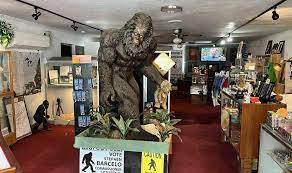
[ad_1]
Uncovering the Secrets of Cryptozoology: A Step-by-Step Guide
Cryptozoology, derived from the Greek words ‘kryptos’ meaning hidden or secret, and ‘zoology’ meaning the study of animals, is a field of study that investigates and explores creatures that are believed to exist but have not been proven by mainstream science. These creatures, known as cryptids, range from legendary monsters like Bigfoot and the Loch Ness Monster to lesser-known species like the Chupacabra and Mothman. If you’re intrigued by the mysteries of cryptozoology and want to delve deeper into this fascinating world, here is a step-by-step guide to help you get started.
Step 1: Familiarize Yourself with Basic Cryptozoological Concepts
To understand cryptozoology, it is essential to first familiarize yourself with its basic concepts. Start by researching the most well-known cryptids and their stories, such as the Yeti and the Thunderbird. This will give you a foundation to build on as you delve deeper into the field. Explore the different types of cryptids, including terrestrial, aquatic, and aerial creatures. Gain knowledge of famous cryptozoologists like Ivan T. Sanderson and Bernard Heuvelmans, who have made significant contributions to the field.
Step 2: Learn the Methods and Techniques of Investigation
Cryptozoology requires a unique set of investigative skills. Begin by researching the different methods and techniques utilized by cryptozoologists in their searches. This may include field research, interviewing eyewitnesses, conducting stakeouts, setting up camera traps, and analyzing photographic or video evidence. Understanding these techniques will help you conduct your investigations more effectively and efficiently.
Step 3: Join a Cryptozoology Group or Organization
To enhance your knowledge and experience in cryptozoology, consider joining a group or organization dedicated to the field. These groups often conduct expeditions, host conferences, and share valuable insights and research findings. They also provide a platform for networking with like-minded individuals and exchanging ideas. Examples of such organizations include the International Cryptozoology Society and the Center for Cryptozoological Studies.
Step 4: Conduct In-Depth Research on Specific Cryptids
Once you have a solid foundation in cryptozoology, it’s time to dive deeper into the research of specific cryptids. Choose a cryptid that intrigues you the most and start researching its history, reported sightings, and relevant scientific analyses. Examine both skeptical and believer perspectives to gain a comprehensive understanding of the creature. This research will empower you to critically evaluate the existing evidence and contribute to the field’s knowledge base.

Step 5: Utilize Technology and Tools
Advancements in technology have greatly aided cryptozoological investigations. Equip yourself with tools such as high-quality cameras, GPS devices, and night vision equipment to document potential sightings or evidence during field investigations. Additionally, familiarize yourself with software and online databases specifically designed for the analysis and organization of cryptozoological data.
Step 6: Explore Cryptozoological Hotspots
Certain regions around the world are known for numerous reported cryptid sightings, making them hotspots for cryptozoological investigations. Examples include the Pacific Northwest in the United States for Bigfoot, the Scottish Highlands for the Loch Ness Monster, and the Amazon rainforest for various unknown creatures. Plan expeditions to these locations to increase your chances of discovering cryptids firsthand.
Step 7: Collaborate and Share Findings
Cryptozoology thrives on collaboration and the sharing of findings. Engage with fellow cryptozoologists and researchers who share similar interests to exchange knowledge and ideas. Attend conferences, workshops, and seminars where professionals in the field present their latest findings. By collaborating and sharing your own research, you contribute to the collective knowledge of cryptozoology.
Step 8: Remain Objective and Skeptical
Whilst pursuing your cryptozoological interests, it is crucial to remain objective and skeptical. Cryptozoology straddles the line between science and speculation, and it is essential to question claims, evaluate evidence critically, and avoid falling into the trap of confirmation bias. A balanced approach will strengthen the credibility of your research and maintain the integrity of the field.
Step 9: Document and Publish Your Findings
As you accumulate knowledge and experience in cryptozoology, it is important to document and publish your findings. This can be in the form of articles, research papers, or even a dedicated blog or website. By sharing your discoveries, you contribute to the ongoing exploration of these mysteries and inspire others to further investigate the secrets of cryptozoology.
Cryptocurrencies: Dying Trend or New Opportunities?
In conclusion, cryptozoology offers a captivating journey into the unknown, where the search for hidden creatures continues to intrigue and excite researchers and enthusiasts worldwide. By following this step-by-step guide and delving into the secrets of cryptozoology, you can contribute to the field’s ever-growing pool of knowledge and perhaps even uncover the truth behind these elusive cryptids.
[ad_2]







